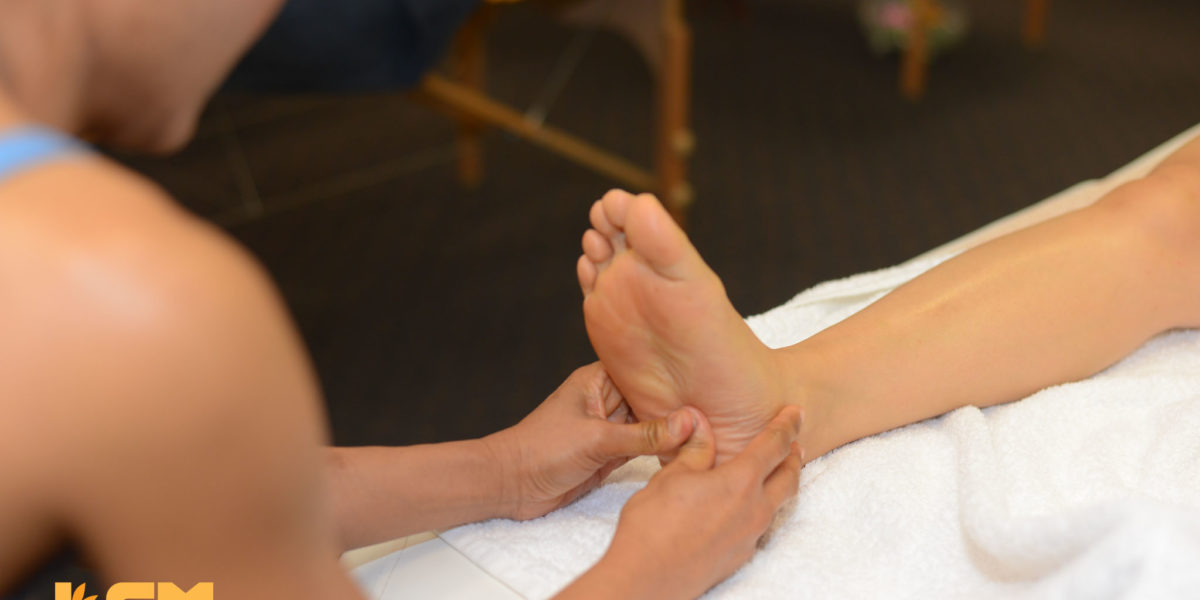WHAT IS PLANTAR FASCIITIS?
Plantar fasciitis is a common cause of pain in the heel. Plantar Fasciitis (or fasciopathy) is a condition of pain due to tissue damage at the attachment of the plantar fascia to the underside of the calcaneus (heel bone). The plantar fascia is a band of strong and thick connective tissue that runs along the sole from the heel to the ball of the foot, connecting the heel bone to the toes, creating the foot’s arch. Its function is to keep the bones and joints in position that allows us to jump off from the ground. Bruising or overstretching this ligament can cause inflammation and heel pain. Even though plantar fasciitis is often associated with a heel spur. However, the spur itself does not cause pain as many people have heel spurs without any pain.
WHAT ARE THE COMMON SYMPTOMS OF PLANTAR FASCIITIS?
The pain under the heel can be dull or sharp – like a knife sticking into the bottom of the foot. The foot might be ache or burn and the heel might be slightly swollen.
- The pain can get worse with the first few steps in the morning or after long periods of standing or sitting
- Heel pain when climbing stairs or when standing on tiptoe.
- Tenderness to the anterior medial heel
- Limited dorsiflexion and tight achilles tendon
- Worse pain when barefoot on hard surfaces
WHAT CAUSES PLANTAR FASCIITIS?
It can be caused by:
- Certain sports that involves activities with a lot of strain on the heel bone, like running, dance and aerobics
- People with flat-footed or high arches that have reduced shock absorption or tighter plantar tissue.
- Aging, as the muscles that support the arch becomes weaker.
- Being overweight, pregnancy that put more pressure on the plantar fascia.
- Spending a lot of time on your feet standing or walking on hard surfaces.
- Wearing poorly designed shoes with poor arch support or stiff soles.
WHICH TREATMENTS ARE RECOMMENDED FOR PLANTAR FASCIITIS?
- Physiotherapy with specific strength training and stretching exercises
- Resting as much as possible
- Good designed shoes with cushion support and memory foam.
- Night splints to wear while sleeping
- Support gadgets
- Ice pack
WHAT SHOULD BE AVOIDED IF I HAVE PLANTAR FASCIITIS?
- Avoid excessive pressure on the heel by maintaining a healthy weight
- Avoid wearing wrong shoes and going barefoot, especially on hard surfaces
- Avoid overusing the heels by allowing enough resting time between sessions
- Avoid activities that cause pain
- Avoid being dehydrated by having enough water
REFERENCES
Plantar Fasciitis n.d., Physiopedia, viewed 28 Oct 2019, <https://physio-pedia.com/Sciatica>
Health Direct 2018, Plantar Fasciitis, Australian Government Department of Health, viewed 28 Oct 2019, <https://www.healthdirect.gov.au/plantar-fasciitis>
Miller, J., Russell, Z. n.d., Plantar Fasciitis, Physioworks, viewed 28 Oct 2019, <https://physioworks.com.au/injuries-conditions-1/plantar-fasciitis>

